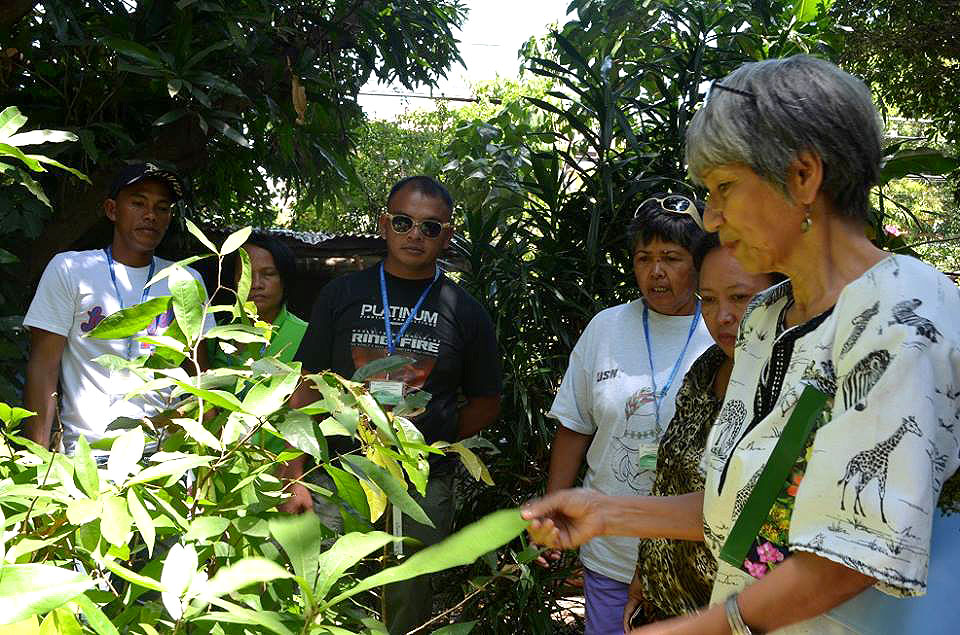News
Sarihay in Focus: “The Mathematics of Mangrove Conservation” by Dr. Custer C. Deocaris (DZEC Radyo Agila)
Posted on May 20, 2015(Ninth in an eleven-part series.)
In the aftermath of late 2013’s super-typhoon Yolanda (Haiyan), mangroves were put on the forefront of the discussion as coastal towns’ natural buffer zones against devastating storm surges. Needless to say, mangroves thus became the flagship plant of choice for rehabilitation and replanting efforts – a poster child of sorts for natural toughness and resiliency.
However, post-calamity rehabilitation and mangrove area conservation are not as simple as planting propagules by bulk at any given time. As natural processes go, there is a delicate nuance and mindful awareness required if these mangroves are intended to flourish along our coasts and provide both resources and protection in the long run.
This matter was the focus of “The Mathematics of Mangrove Conservation”, the June 1, 2014 episode of Pinoy Scientist, an afternoon radio program which airs over DZEC Radyo Agila. In the episode, host Dr. Custer C. Deocaris fielded important questions towards his guests, the celebrated local mangrove expert Dr. Jurgenne Primavera and young physicist Dr. Earl Juanico.
Shedding light on important, often overlooked insights on proper planning and efficient implementation of mangrove rehabilitation efforts, the radio show merited the Sarihay Media Award for Best Radio Commentary.
Dr. Jurgenne Primavera, one of the Philippines’s leading experts on mangroves, guested on the DZEC radio show to help explain the science behind effective mangrove conservation and rehabilitation. (File photo, taken last March 2014 at an FPE-conducted mangrove rehabilitation training course for Yolanda-affected communities. Click the photo to read more.)
Through the radio show, Dr. Primavera and Dr. Juanico communicated the need for a more thorough rehabilitation plan for mangroves along coastal communities. They noted that, for the most part, mangrove replanting efforts – both prior to, as well as in response to Yolanda – were hurried, misguided, and ultimately unsustainable.
Among the notable bad practices that are affecting the country’s mangroves are proper species, as well as site selection. She pointed out that after Yolanda, planted Rhizophora species (bakhaw) – planted mostly in the wrong sites (i.e. seafront areas) – were practically wiped out, whereas natural growths of species such as piapi (Avicennia marina) and pagatpat (Sonneratia alba) were able to recover naturally. (Read more about Dr. Primavera's insights on this matter from this Philippine Daily Inquirer article.)
Post-disaster impact assessments should also be improved to involve medium-term evaluation, instead of just looking at the immediate impacts. This should allow scientists and planting program planners to see which species and sites are able to recover naturally, as well as to what extent they are doing so.
Dr. Primavera also warned against misuse of large government budgets to fund poorly studied, planned, and implemented mangrove planting efforts. Dr. Juanico added that a more systems-oriented manner of thinking should be adopted in order to understand first how mangrove species survive or thrive within particular conditions and settings.
The guest scientists stressed that the “tusok here, tusok there” mentality of mangrove planting – often for the sake of by-the-bulk, record-setting agenda – needs to be dropped in favor of a more meticulous approach, guided by science and aiming towards sustainability.
Listen to the full commentary through this link.
* * * * *
The Sarihay Media Awards was launched last February 2014 in recognition of the important role of the media in promoting awareness and better understanding of environmental and sustainable development issues among policymakers, decision makers, and the public. The campaign served as both acknowledgement and reward to those who deliver outstanding and responsible reportage of environmental news. The term "Sarihay" comes from the Filipino phrase, "Samu't Saring Buhay", which aptly describes biodiversity.
Read More:
- Executive Director Dr. Jerome L. Montemayor carried the banner of the Foundation for the Philippine Environment and the larger civil society during the SBSTTA 26 and SBI 4 meetings in Kenya
- Call for Proposals for the SGP-8 Country Programme Strategy
- #Y4B Ambassadors: JOEPET JEROME S. JARO
- #Y4B Ambassadors: MELLARD MANOGURA
- #Y4B Ambassadors: MARY JANE P. MAGAN
- #Y4B Ambassadors: SHRI TAHANIE B. MACAUMBAO

 DISPLAY CALENDAR
DISPLAY CALENDAR

 Read Policy Briefs
Read Policy Briefs
 View Our Partners
View Our Partners
 Access Grants MIS
Access Grants MIS
 Login to Webmail
Login to Webmail